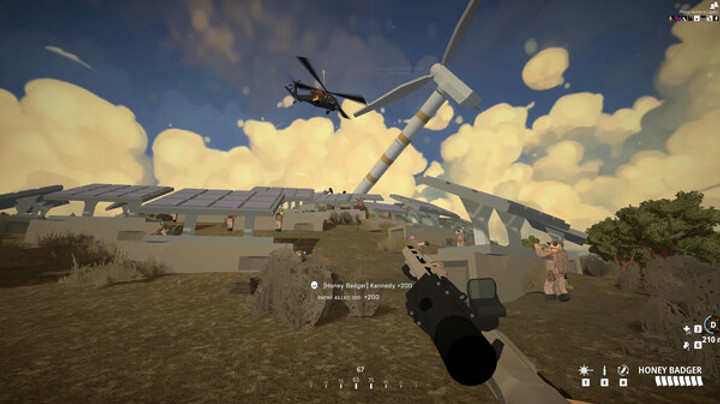Looking for an edge in BattleBit Remastered? Well, one of the best things you can do is adjust your graphics settings for max FPS. This way, you can achieve crisp, clean, and smooth visuals. Better yet, improving your game's performance, you'll notice a massive improvement in gameplay, too!
And yes, we get it. With countless settings configurations at your disposal, choosing the right one can be tricky. However, this guide will explain exactly how to get the max FPS in BattleBit Remastered. So get ready to experience the game like never by using the best settings in this popular low-poly shooter.
Updated on 17 June 2023: Sure, you can squeeze the max frames out of your GPU. But why stop there? Check out our BattleBit Remastered weapon tier list or guide on how to level up quickly to unlock your inner marksman!
Table of Contents
How To Get Max FPS In BattleBit Remastered
Disable V-Sync
The first thing you are going to want to do is to go into the "Settings" menu and navigate to the "Video" tab. Once in there, ensure that "Vertical Sync" is off. This setting can lower frames, particularly if your monitor's refresh rate exceeds the game's FPS. However, be aware that this may cause screen tearing in some instances.
Adjust Max FPS
The next thing you can do is adjust your max FPS counter to a high value; 200 or more is optimal, given BattleBit Remastered's low-poly graphics. However, if you're running the game on older hardware, you may need to lower this range, but ideally, keep it between 120-200 for smooth gameplay.
Reset The Field Of View
The third step is to ensure your Field of View (FOV) is set between 100-110. This setting enhances your handling of fights in BattleBit Remastered by providing a broader view when enemies cross your screen center, allowing you to see more during combat. Vehicle FOV can be set to 90-100.
Turn Off Screen Shake
In addition to this, set your Screen Shake to 0. This setting will significantly smooth your gameplay experience and noticeably improve your ability to engage in fights. Indeed, this value should always be set to 0 for the most noticeable increase in your max FPS in BattleBit Remastered.
Disable Anti-Aliasing
Next, consider disabling Anti-Aliasing entirely. This action eases the workload on your graphics card by removing the process that smooths out jagged edges on objects. While it may result in slightly less polished visuals, the trade-off is a potential boost in FPS, inching you closer to attaining the maximum FPS in BattleBit Remastered.
Adjust Render Distance
If you predominantly find yourself in mid-range combat, consider setting the Render Distance to 4000. This will increase the available resources your graphics card might need to boost your frames in BattleBit Remastered. Otherwise, if you're planning on taking super long-distance fights, then adjust it accordingly.
Disable Motion Blur
As a final tip, disable Motion Blur. This setting reduces the amount of post-processing your GPU has to perform, improving your FPS. Not doing this can also make playing fast-paced FPS games like BattleBit Remastered harder because the blurring effect makes it difficult to see clearly.
And that's it! Now you know how to get the max FPS in BattleBit Remastered. But why stop there? Learn how to dominate the battlefield with an assortment of BattleBit cheat codes or unlock a variety of free rewards with these BattleBit redeem codes!
BattleBit Remastered Best Settings For Max FPS FAQ
How can I optimize my settings to get the max FPS in BattleBit Remastered?
To maximize FPS, turn off vertical sync, set a high max FPS counter (e.g., 120-200), increase the field of view to 110, disable screen shake, disable anti-aliasing, adjust render distance as needed, and turn off motion blur.
Why is disabling V-sync important for maximizing FPS in BattleBit Remastered?
Disabling vertical sync prevents frame rate reduction and ensures smooth gameplay performance, especially on different types of monitors.
What impact does disabling anti-aliasing have on performance in BattleBit Remastered?
Turning off anti-aliasing reduces strain on your graphics card, resulting in better FPS and decreased unnecessary graphical effects.

 No ads, our video library,
No ads, our video library,



